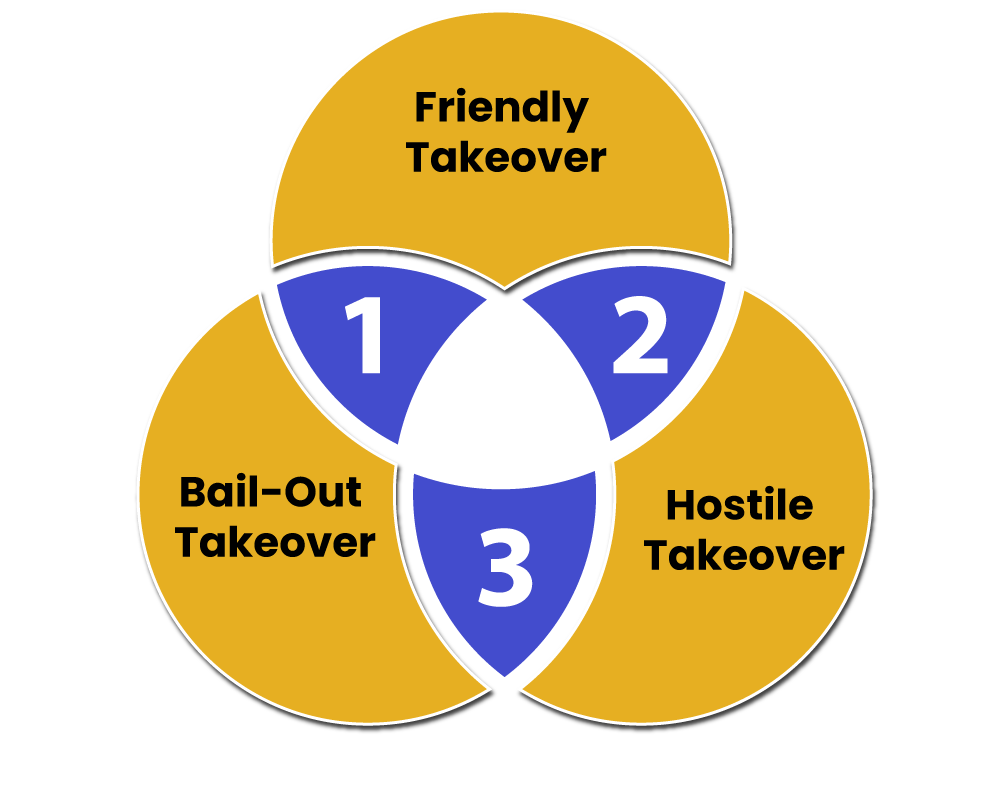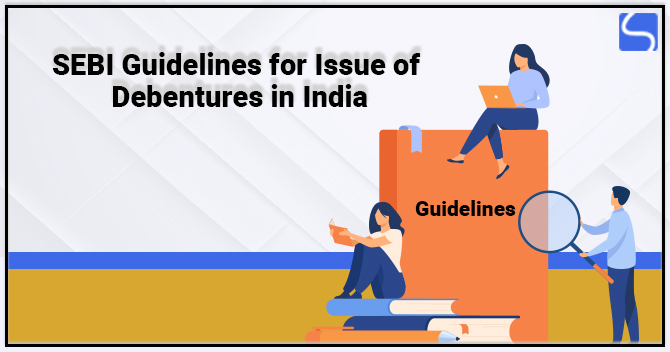Purpose of Business Takeover – An Overview

Karan Singh | Updated: Jul 13, 2021 | Category: SEBI Advisory
Business Takeover aids in accomplishing a lot of advantages. It aids in the increasing market potentially, expanding customer base. Scroll down to check more information regarding the purpose of Business Takeover.
Table of Contents
Business Takeover – Primary Purpose
- To expand through acquiring entities with new product lines and new market areas, as one of the entry strategies to decrease some of the risks intrinsic in stepping out of the historical core capability of the acquirer;
- To accomplish economy of numbers by mass productions at economical prices;
- To protect significant facilities as available to a big company compared to small companies for increasing extra capital, increasing market potential, spreading customer base, buying raw materials at economical costs and for having own merged and developed R&D (Research and Development) activities for regular improvement of the products, so as to make sure as permanent market share in the industry;
- To accomplish the development of the market by getting one or more entities in new geographical territories, in which the acquirer’s activities are absent or don’t have a robust presence;
- Increase market share;
- To achieve savings in overheads and other working costs on the strength of merged resources;
- To improve prosperity & productivity by mutual efforts of technical and other personnel of both entities as a result of combined control;
- To create shareholder wealth & value by most satisfactory utilisation of the resources of both entities;
- To protect the benefit of vertical combination by having under single command & under one roof, all the processes or phases in the manufacture of the finished product, which had previously been available in two entities at various locations, thereby saving unloading, loading, transportation expenses & other costs and also by affecting saving of energy & time needlessly spent of excise formalities at multiple stages and places;
- To accomplish product improvement via acquiring companies with compatible products and manufacturing or technological capability, this can be sold to the acquirer’s present marketing areas, dealers & end-users.
What are the Different Types of Company or Business Takeover in India?
Following are the different types of business takeovers:

- Friendly Takeover: Friendly Takeover is with the approval taken by the company. In a Friendly Business or Company Takeover, there is an agreement between the management of two companies via negotiations & the takeover bid, maybe with the consent of the majority or all shareholders of the Target Company. This type of Company Takeover is done via negotiations between two groups. Hence, it is also called a Negotiated Takeover.
- Hostile Takeover: It’s a type of Business Takeover where an acquirer company doesn’t provide Target Company proposal to get its undertaking but unilaterally & silently takes pains to gain control against the desires of the present management.
- Bailout Takeover: A Business Takeover of the economically weak company by profit-earning company to bail. Out of the earlier is known as a Bailout Takeover. There are some advantages of a profit-making company to take over a sick company. The price would be very attractive to creditors, mainly banks and financial institutions having a charge on the industrial assets would like to improve to the extent possible.
Banks & other lending financial institutions would estimate different options & if there is no other goes except to sell the property, they will invite bids. Such a sale could take place in the type of transfer of shares. While recognising a party (acquirer), lenders estimate the bids received, the purchase price, the track record of the acquirer & the overall financial position of the acquirer. Hence, a Bailout Takeover takes place with the consent of the Financial Banks and Institutions.
Procedure of Business Takeover
Following is the step by step procedure of Business Takeover:
- Merchant Banker’s Appointment (Regulation 3)
An acquirer shall have to assign a category I Merchant Banker who is not associate of or acquirer’s member group or the Target Company before making a public announcement.
- Minimum Public Offer (Regulation 21)
The acquirer has to make the public offer to obtain the Target Company’s share for a minimum of 20% of the voting company, and it shouldn’t be less than 20%.
- Public Announcement (Regulation 14)
It’s an announcement made by the acquirer or purchaser via a merchant banker disclosing their intention to get a minimum of 20% of voting rights or shares of the Target Company. Public announcement shall be in English language and one in a vernacular language regular newspaper circulating in the state where the incorporated office of the Target Company is situated and the stock exchange where the shares are most traded. The announcement should comprise the details regarding the offer price, the number of shares to be obtained from upcoming plans, public, purpose, and details of the purchaser and offer period.
- Opening of Escrow Account (Regulation 28)
The purchaser or acquirer will open an arrow account for 25% of the consideration of offer size less than Rs. 100 crores and 10% for the surplus of consideration more than Rs. 100 crores with a scheduled bank.
- Filing of LO (Letter of Offer) with SEBI (Regulation 18)
Within fourteen days of the public announcement, a letter of offer should be filed with SEBI. The following must be filed along with LO:
- A soft and hard copy of the public announcement made along with the cutting of newspaper in which advertisement has been published;
- Due Diligence Certificate;
- A filing fee of or banker’s cheque as prescribed.
The purchaser shall, within fourteen days of the public announcement, send a Letter of Offer draft copy to the Target Company and all stock exchanges. Letter of Offer shall be dispatched to shareholders within twenty days from submission to SEBI[1].
- Minimum Offer Price (Regulation 20)
Letter of Offer should comprise the minimum offer price. At the same time, understanding the minimum offer price, the following shall be considered.
- The highest cost paid by the acquirer for the acquisition of shares in a public or right or preferential issue during twenty-six weeks prior to the announcement, whichever is high;
- In the case of Target Company’s shares are not frequently traded book value EPS, return on total worth, etc. to be considered;
- Negotiated price between shareholders & acquirer of the Target Company;
- In the case of Target Company’s shares, the company are commonly traded the average weekly price during twenty-six weeks.
- Acquirer’s Other Obligations (Regulation 22)
A public announcement will be made only when the purchaser is liable for executing the offer. At the time of offer, the person or acquirer acting in concert will be eligible to be appointed on the Board of the Target Company.
The obligation of the Target Board Co./Merchant Banker (Regulation 23 & 24)
After the public announcement or offer, the target company’s board, unless consented to by the members at a common body meeting, shall not transfer, sell, or dispose of the company’s assets or its subsidiaries or permit any unissued securities or enter into any material contracts. The Merchant Banker will have to send a final report to SEBI within forty-five days from the closure date of the offer.
Withdrawal of Acceptance or Offer (Regulation 27)
The shareholders shall have the alternative to withdraw acceptance given by them up to three working days prior to the closure date of the offer. A purchaser or acquirer shall have no choice to withdraw a public offer made except under the following situations:
- Legal consents required have been rejected;
- The single acquirer being a natural person has demised;
- Such situations as in the view of the SRBI Board merit withdrawal.
Conclusion
Business Takeover can be of any type, whether Hostile Business Takeover, Friendly Takeover, or Bailout Takeover. A Business Takeover can serve different requirements, and it is done with an outlook to fulfil all objectives mentioned above. You can also contact any professional regarding the Business Takeover or Company Takeover.
Read our article:Cultural Due Diligence – An Overview














